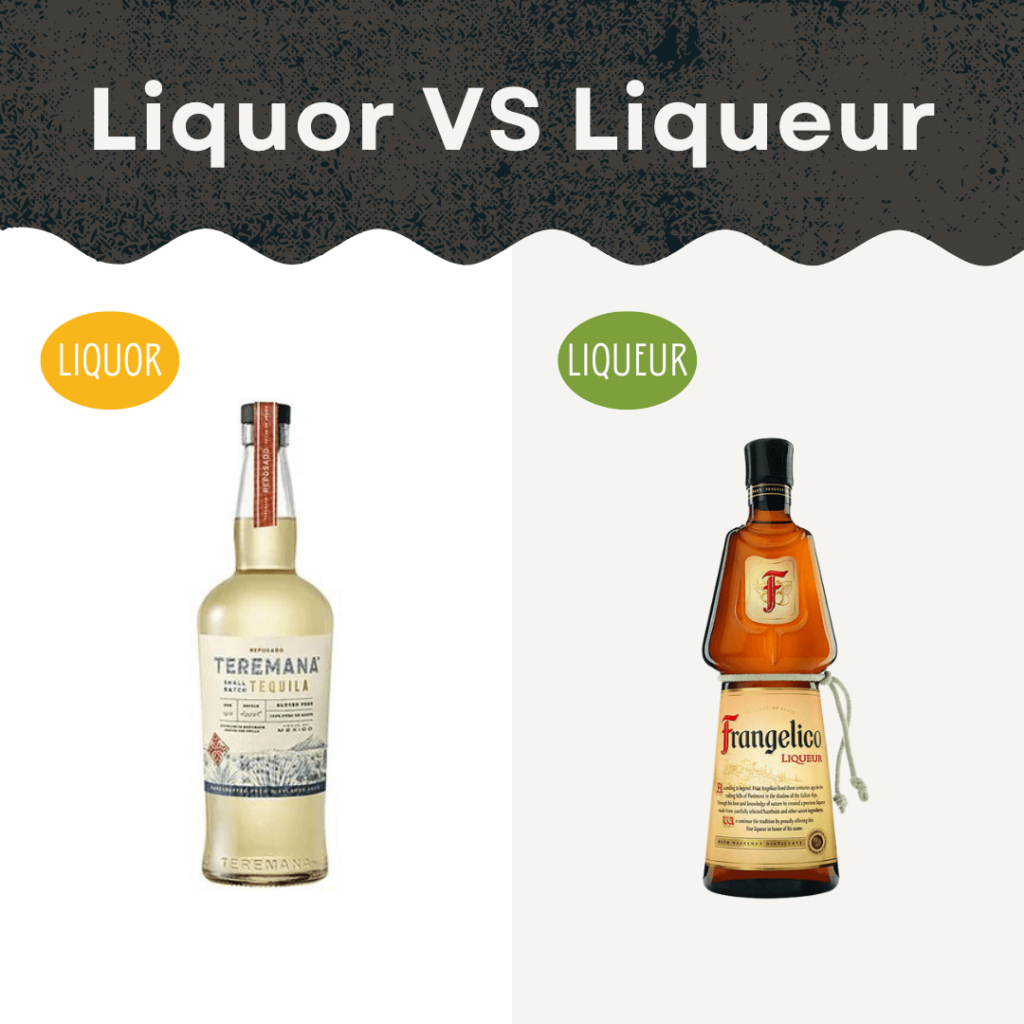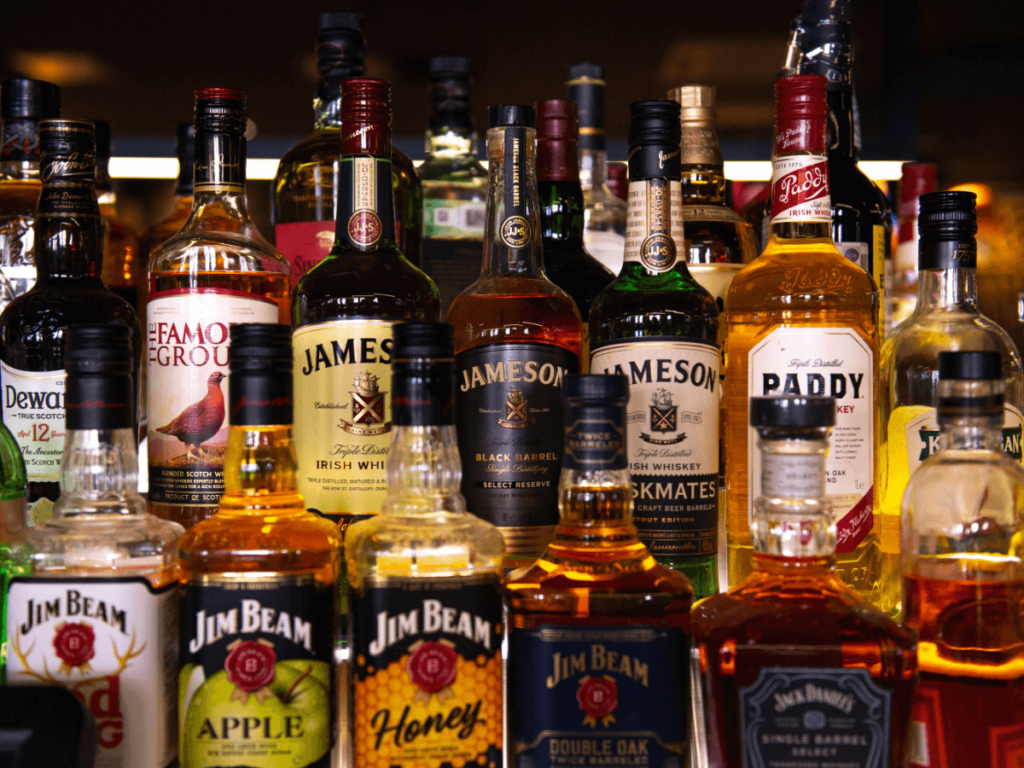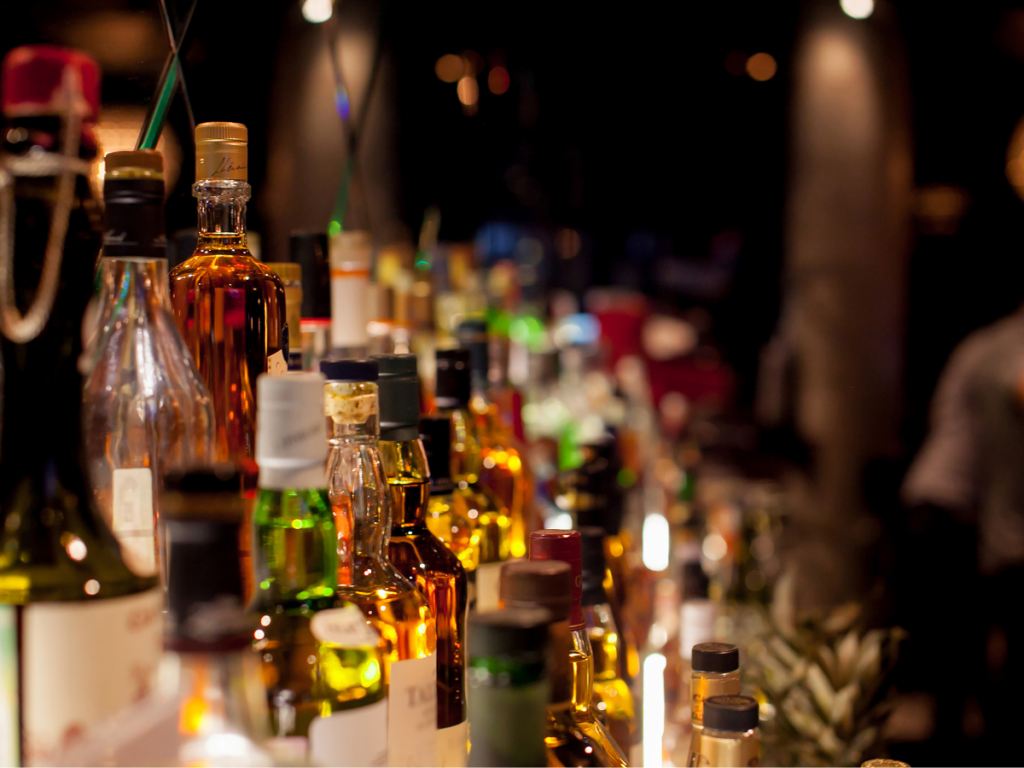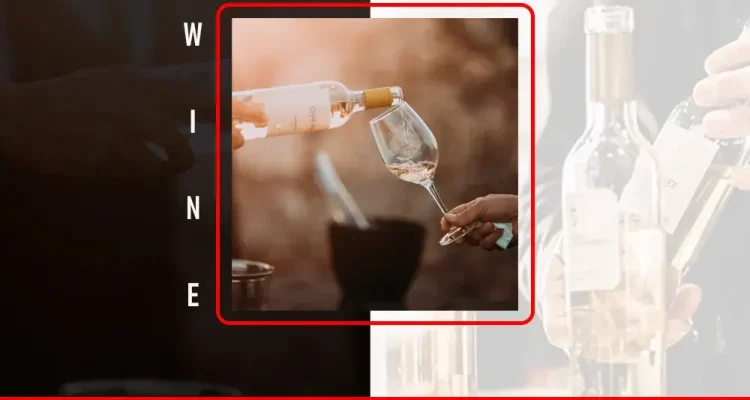Je hebt vast wel eens moeite gehad om een fles te openen zonder flesopener. Nou, je worstelingen...
Likeur VS Likeur: Wat is het verschil
Today we’re talking about two types of alcoholic drinks that often get confused – liquor and liqueur.
You’ve definitely heard of both before. From vodka and whiskey to Bailey’s and Kahlua, these strong spirits are staples behind most bars and can totally transform a cocktail. Or just be sipped on their own!
Maar hoewel ze erg op elkaar lijken en beide drankjes voor volwassenen zijn, zijn likeur en likeur eigenlijk heel verschillend.
I didn’t really understand the exact differences myself until recently!
So in this article, we’ll break down what sets liqueurs and liquors apart, look at some popular varieties of each, and go over how you can use them.
Likeur VS likeur: Wat is het verschil
First off – pronunciation. I’ve heard both liquor and liqueur incorrectly pronounced many times. Just to be clear:
Liquor is pronounced “lick-er.”
Liqueur is pronounced “luh-kur.”
Got that? Great! With that out of the way, let’s jump right into understanding these terms.
At a basic level, liqueurs and liquors are both alcoholic beverages that contain distilled spirits. But liqueur has added flavorings like fruits, cream, herbs, nuts, spices, or even coffee or chocolate. The extra ingredients make them sweeter and more syrupy, while liquors don’t contain added sugar or flavors.
Zinvol tot nu toe? Om het belangrijkste onderscheid samen te vatten: Likeur verwijst naar gedistilleerde dranken zoals wodka, rum, whisky, enz. Likeur gebruikt likeur als basis, maar voegt extra smaak toe.
Now you might be wondering – how did these flavorful liqueurs come about? And what exactly IS the process of distillation that liquors go through? Good questions! Let’s explore those next.
Geschiedenis en productie
Mensen stoken al duizenden jaren sterke drank! Enkele van de eerste gedistilleerde dranken ontstonden waarschijnlijk rond de 12e eeuw in Italië en Frankrijk. In die tijd werd van veel likeuren gedacht dat ze medicinale eigenschappen of speciale helende krachten hadden. Na verloop van tijd verspreidden de recepten en technieken zich over Europa, het Midden-Oosten en Azië.
Today, we of course know liquor more for its intoxicating effects than any health benefits. But fun fact – even in the 1500-1600s, liqueurs were still largely used as medicine rather than recreational drinks. Their viscous texture and concentrated herbal flavors made liqueurs sort of a sweetened cure-all tonic. It wasn’t until hundreds of years later that they became popular as after-dinner drinks or cocktail mixers.
Of je nu basislikeur of gearomatiseerde likeur maakt, de eerste stap is fermentatie. Dit betekent dat suikers en zetmeel worden blootgesteld aan gist, die ze omzet in alcohol. Fermentatie is niet alleen essentieel voor drank, maar ook voor dingen als wijn, bier, brood en zelfs yoghurt!
Next comes the truly defining process – distillation. This involves heating up fermented liquids to the point that alcohol evaporates, then collecting and cooling those alcohol vapor droplets. Repeating this redistillation makes the end product higher and higher proof.
What’s left is concentrated ethanol alcohol alongside various organic compounds that provide taste, aroma, and complexity. The more times it’s redistilled, the purer and cleaner the liquor becomes. Vodka is one of the most extremely distilled spirits, getting up to 95% ABV!
Andere likeuren zoals whisky en brandy ondergaan zeer specifieke distillatieomstandigheden om de gewenste smaken te benadrukken. Veranderende factoren zoals temperatuur, vorm van de apparatuur, gefermenteerde ingrediënten en rijpingstijd geven verschillende klassieke likeurtypes zoals rum, gin en tequila hun onderscheidende karakter.
Now let’s go back to liqueurs. As we learned already, they start with a fermented and distilled base liquor. The extra step is infusing, mixing, and sweetening it with anything from fruits, nuts, spices, herbs, flowers or bark to chocolate, caramel, honey, dairy cream, eggs, and more.
Tegenwoordig zijn er duizenden unieke likeuren met eindeloze combinaties van likeurbases en smaakstoffen. Sommige likeurrecepten zijn al generaties lang streng bewaakte geheimen!
Populaire variëteiten van
Alright, now that we understand how they’re made, let’s go through some popular types of liquor and liqueur along with what makes them special. We won’t have time to cover them all, but these are definitely the heavy hitters you’ll encounter at the bar or liquor store.
Soorten drank
Beginnend met drank zijn de hoofdcategorieën:
- Wodka: Typically made from grains like wheat, rye, or potatoes. This neutral spirit becomes a “blank canvas” for both cocktails and infused flavor varieties like lemon, vanilla, or cinnamon vodka. Popular brands include Smirnoff, Absolut, Tito’s, and Ketel One.
- Rum: Gemaakt van bijproducten van suikerriet, zoals melasse of vers sap. Zowel donkere als lichte rum geeft zoetheid en karakter aan tiki-drankjes en zomerse cocktails. Captain Morgan, Bacardi, Malibu en Myers zijn enkele bestsellers.
- Tequila: Mexico’s most iconic spirit comes from the agave plant. From mixed drinks like the Tequila Sunrise to salt-rimmed shots, this liquor with herbaceous flavors makes the party more fun. Patron, 1800, Casamigos, and Jose Cuervo rule the blue agave game.
- Whisky: Usually distilled from fermented grain mash including varieties like corn, barley, rye or wheat. Aged in wooden barrels for complexity. Bourbon, Scotch, Irish, and Tennessee styles like Jack Daniel’s, Jameson, and Crown Royal define whiskey’s popularity.
- Gin: Juniper-flavored liquor made from neutral fermented grains. The juniper berry’s bracing pine quality refreshes cocktails like the Martini and Gin and Tonic. Top brands are Tanqueray, Aviation, Bombay Sapphire, and Hendrick’s.
- Brandy: Gemaakt door vruchtensappen zoals appels of druiven te distilleren tot een zachte eau de vie die vervolgens rijpt op eikenhout. Beroemde soorten zijn Cognac en Armagnac uit Frankrijk. Hennessy, Courvoisier en Martell hebben prestige.
Soorten likeuren
Those cover the major liquor bases you’ll encounter. Now what about delicious liqueurs? Some of the main liqueur varieties are:
- Fruit: Presenteer zoete smaken zoals braam, sinaasappel, perzik, meloen of bes. Deze cordials geven een feestelijke smaak aan cocktails. Voorbeelden zijn Cointreau, Grand Marnier, Chambord en limoncello.
- Koffie: Mixen als Kahlua en Tia Maria maken after-dinner drankjes als Irish Coffee extra lekker. Het mengen van koffie en sterke drank is een comfortabele en toch geraffineerde combinatie.
- Crème: Creamy liqueurs have an airy, velvety texture thanks to added dairy or eggs. Bailey’s Irish Cream and Amarula fruit cream give dessert cocktails a decadent edge.
- Chocolade: Voor de ultieme traktatie bevredigen chocoladelikeuren als Godiva en Tiramisu het verlangen in een dronken vorm. De rijke, verwarmende diepte maakt ze een natuurlijke toevoeging aan martini's.
- Kruiden: Deze allesomvattende smaakcategorie omvat likeuren gemaakt van kruiden, bloemen, zaden, specerijen, boomschors, wortels, vanille en meer. Deze complexe botanische infusies omvatten Chartreuse, St. Germain, Benedictine, Drambuie en Jagermeister.
- Moer: Toasted nut flavors give these liqueurs full body and subtle sweetness. Frangelico’s hazelnut and Disaronno’s almond profiles make them mixers that instantly elevate fall and winter drinks.
Of course we’ve still just barely scratched the surface of all the liqueurs out there today, not to mention the rising tide of creative craft liquor distilleries. But knowing this lineup will help you understand menus and recipes much better.
Likeuren en likeuren gebruiken
Now you know what makes liqueurs different from straight liquor. So how do bartenders actually use them in drinks? And what’s the best way to drink them when you’re not mixing cocktails?
Liquors are extremely versatile thanks to their neutral flavor. As “base spirits,” they build the foundation of all kinds of cocktails balancing stronger boozy impact with other sweet, sour, or herbal elements. They can also be simply sipped neat, over ice, or with a basic mixer like soda, juice or tonic water.
Vodka’s mild profile suits chilled shots, refreshing mixed drinks like vodka soda or Screwdriver, and picks up other flavors easily in infusions. Gin plays nicely with lighter mixers like tonic, citrus, elderflower, or cucumber to round out its juniper bite in G&Ts and gimlets.
Whiskey’s complexity shines when drunk straight or on the rocks but also adds depth to an Old Fashioned or Manhattan when combined with bitters, sugar, and other liquors. And tequila adds Southwestern flair to spice up margaritas, sangrias, and spicy-smoky combinations.
Vergeleken met likeur voor alle doeleinden hebben likeuren meer specifieke toepassingen door hun zeer zoete en sterke aard. Je hebt ze maar in kleine hoeveelheden nodig om een merkbaar effect te hebben. Veel meer dan een half ons zal snel andere ingrediënten overstemmen.
Van oudsher verschenen likeuren aan het einde van extravagante banketmaaltijden in aristocratisch Europa om de spijsvertering te bevorderen. Vandaag de dag worden likeuren op een vergelijkbare manier benadrukt in koffiecocktails na het eten, zoals Irish Coffee en Espresso Martinis. Hun rijkdom compenseert de bittere koffie voor een zoete verwennerij.
In cocktails overbruggen likeuren de kloof tussen de basis van drank en aanvullende smaken. Kijk maar hoe triple sec, een zoete sinaasappellikeur, tequila verbindt met citrussap in een Margarita. Of hoe cherry Heering brandy en vermouth zo soepel met elkaar verbindt in een Manhattan.
Bittersweet herbal liqueurs add intrigue to simple two-ingredient combos too – think Campari and gin or Aperol and prosecco. Even just adding a splash of one to a dram of straight whiskey makes for a warming, gently enhanced take on a classic spirit.
Thanks to sweeter flavors that offset liquor’s punch, many liqueurs also make great introductory alcohols for those new to drinking too. Berries and cream Baileys over ice proves far more approachable than harsh whiskey or vodka to start with.
En de laatste manier waarop veel mensen van likeuren genieten is gewoon op zichzelf als gekoeld shot of decadente slok. Als je de nootachtige, gekruide Drambuie of met koffie gekuste Kahlua puur serveert, laat je hun met suiker gladgestreken, geconcentreerde intensiteit schitteren.
Conclusie
We’ve covered quite a bit of ground going through all things liquor and liqueur! To recap, the key points about each are:
Drank:
- Verwijst naar een gedistilleerde drank met een alcoholpercentage van 40 tot 55% ABV.
- Gemaakt via fermentatie en meerdere distillaties voor zuiverheid
- Inclusief wodka, rum, tequila, gin, brandy, whisky
- Veelzijdig om puur te drinken of te mixen in cocktails
- Geeft een basis gedistilleerde drank smaak maar geen toegevoegde zoetheid
Likeur:
- Begint met een gedistilleerde likeurbasis plus toegevoegde aroma's
- Meestal lagere alcohol rond 15-30% ABV
- Inclusief fruit, koffie, room, noten, kruiden, chocoladestijlen
- Geeft een rijke zoetheid, viscositeit en bloemige/kruidige complexiteit
- Meestal gebruikt in kleine hoeveelheden om cocktails te verbeteren
To share a memorable analogy I once heard: Think of liquor as the canvas and liqueur as the paints. You start with blank neutral spirits, then splash in intensely vibrant liqueurs for bursts of color…transforming your basic canvas into a vivid, flavored cocktail masterpiece!
Likeuren en likeuren hebben naast hun toepassingen in de mixologie ook een fascinerende geschiedenis. We hebben besproken hoe ze zich eeuwen geleden ontwikkelden van medicinale kruidentonicums tot de belangrijkste bouwstenen voor cocktails die ze vandaag de dag zijn. Sommige likeurrecepten zijn na honderden jaren nog steeds streng bewaakte geheimen!
Of je nu liever whiskey puur drinkt, graag een excuus hebt om een dessert te drinken met je Baileys op ijs, of thuis voor mixoloog speelt en nieuwe brouwsels maakt, ik hoop dat dit je een nuttige uitsplitsing van likeur versus likeur heeft gegeven om je kennis over sterke dranken te verrijken!
We just covered a whole lot of information, but don’t feel overwhelmed. Getting familiar with some go-to liquor brands you enjoy and experimenting with liqueur flavors can be super fun. No need to learn all their nuances in just one night!
When starting out, sweeter liqueurs tend to be more mixable for beginners too compared to harsher straight liquors. Feel free to start slowly sipping rather than shooting if that’s needed to acquire the taste!
No right or wrong way here – just discover what types of liquor and liqueur suit your preferences.
Bedankt voor het luisteren naar dit nieuwsgierige onderwerp over cocktails! Tot de volgende keer, proost!






